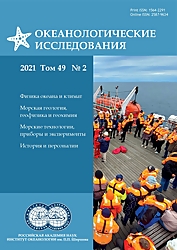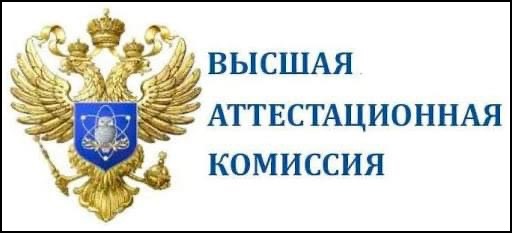СЕЗОННЫЕ ИЗМЕНЕНИЯ СОДЕРЖАНИЯ ЧАСТИЦ МИКРОПЛАСТИКА В ПЕСКАХ ПРИБОЙНОЙ ЗОНЫ ПЛЯЖА
Аннотация
В работе рассматривается сезонная динамика содержания частиц микропластика размером от 0.5 до 5 мм в песках прибойной зоны Вислинской косы (Балтийское море). Частицы микропластика классифицируются по размерам, форме и цвету. Результаты сравниваются с данными по Куршской косе. Сделан вывод о возможности использования уровня загрязнения мелким микропластиком (0.5–2 мм) песков зоны заплеска в качестве «фонового» значения для всего региона и в течение всех сезонов года. Современный уровень загрязнения песков в зоне заплеска волн в Юго-Восточной Балтике частицами мелкого микропластика (0.5–2 мм) в течение всего года составляет 30–60 штук на кг сухого веса, при этом более 90% составляют волокна.
Литература
- Есюкова Е.Е., Чубаренко И.П. Особенности распределения микропластика на песчаных пляжах Калининградской области (Балтийское море) // Региональная экология. 2018. № 1(51). С. 108–121.
- Blott S.J., Pye K. Gradistat: A Grain Size Distribution and Statistics Package for the Analysis of Unconcolidated Sediments // Earth Surf Process Landforms. 2001. Vol. 26. P. 1237–1248.
- Birkun A., Atudorei A., Gamgebeli T., Dedeoglu S.G. Movchan N., Nikolova A., Okus E., Yurenko Y. Marine Litter in the Black Sea Region. 2007. Commission on the protection of the Black Sea against pollution. Retrieved from http://www.blacksea-commission.org/_publ-ML.asp, 17 June 2021.
- Chubarenko I., Esiukova E., Khatmullina L., Lobchuk O., Grave A., Kileso A., Haseler M. From macro to micro, from patchy to uniform: analyzing plastic contamination along and across a sandy tide-less coast // Mar. Pollut. Bull. 2020. https://doi.org/10.1016/j.marpolbul.2020.111198.
- Chubarenko I.P., Esiukova E.E., Bagaev A.V., Bagaeva M.A., Grave A.N. Three-dimensional distribution of anthropogenic microparticles in the body of sandy beaches // Science of the Total Environment. 2018. Vol. 628–629. P. 1340–1351. DOI:10.1016/j.scitotenv.2018.02.167.
- Eo S., Hong S.H., Song Y.K., Lee J., Lee J., & Shim W.J. Abundance, composition, and distribution of microplastics larger than 20 μm in sand beaches of South Korea // Environmental pollution. 2018. Vol. 238. P. 894–902.
- Esiukova E., Zobkov M., Chubarenko I. Data on microplastic contamination of the Baltic Sea bottom sediment samples in 2015–2016 // Data in Brief. February 2020. Vol. 28. 104887 https://doi.org/10.1016/j.dib.2019.104887.
- HELCOM, 2007. Marine Litter in the Baltic Sea Region: Assessment of the Marine Litter Problem in the Baltic Region and Priorities for Response. (Helsinki, Finland).
- Lindeque P.K. Cole M.,Coppock R.L., Lewis C.N., Miller R.Z., Watts A.J. R., Wilson-McNeal A., Wright S.L., Galloway T.S. Are we underestimating microplastic abundance in the marine environment? A comparison of microplastic capture with nets of different mesh-size // Environmental Pollution. 2020. Vol. 265. P. 114721.
- Masura J., Baker J., Foster G., Arthur C. Laboratory methods for the analysis of microplastics in the marine environment: recommendations for quantifying synthetic particles in waters and sediments // NOAA Technical Memorandum NOS-OR&R-48. 2015. P. 31.
- Norén F. Small plastic particles in Coastal Swedish waters. KIMO report. 2007. 11 p.
- Simeonova A., Chuturkova R., Yaneva V. Seasonal dynamics of marine litter along the Bulgarian Black Sea coast // Marine Pollution Bulletin. 2017. Vol. 119. No. 1. P. 110–118.
- UNEP, Marine Litter: A Global Challenge. UNEP. Nairobi, 2009. P. 232.
- Van Sebille E., Wilcox C., Lebreton L., Maximenko N., Hardesty B.D., van Franeker J.A., Eriksen M., Siegel D., Galgani F., and Law K.L. A global inventory of small floating plastic debris // Environmental Research Letters. 2015. Vol. 10. No. 12. P. 24006.
- Wentworth C.K. A scale of grade and class terms for clastic sediments // The journal of geology. 1922. Vol. 30. No. 5. P. 377–392.
- Whitmire S.L., van Bloem S.J. Quantification of microplastics on National Park Beaches. 6/01/2015–05/31/2017 prepared for: marine debris program, Office of Response and Restoration, National Oceanic and Atmospheric Administration, contract GSI-CU-1505. 2017.
Передача авторских прав происходит на основании лицензионного договора между Автором и Федеральным государственным бюджетным учреждением науки Институт океанологии им. П.П. Ширшова Российской академии наук (ИО РАН)












